Leeham News and Analysis
There's more to real news than a news release.
easyJet doing well despite 30% decline in profits
By Bjorn Fehrm
November 22, 2017, ©. Leeham Co: We looked at easyJet March 22 and noted that the carrier is on a solid growth path, despite playing number two in the European LCC market.
The 2017 numbers are now in for FY2017 ending Sept. 30. The yearly profit is down 30% due to a competitive market, but the operation and balance sheet are strong. The Air Berlin acquisition makes easyJet the largest Berlin carrier.
easyJet’s steady growth
EasyJet is on a steady growth path, Figure 1. Capacity increase 8.5% during the year with passengers flown increasing by 9.7%. This increases the load factor to 92.6%.
Revenue per seat is down both in constant and actual currency, due to increased LCC competition in Europe.
Costs ex-fuel (easyJet had positive 2017 fuel cost delta due to hedging gains) increased 4.4% in constant currency. Main cost drivers (Figure 2) have been increased Crew costs and costs for Operational disruptions (ATC strikes and Gatwick congestion issues).
EasyJet now reports its Profit and Loss statement in “Headline” and “non-Headline” form, Figure 3. “Headline” are all items that describe the core operation of the airline.
Figure 4 shows what easyJet labels “non-headline”. I find that end of lease residual value losses and maintenance payments for inadequate maintenance reserves are part of an airline’s operations. The use of “headline” vs. non-headline” confuses more than it gives a clearer picture.
The picture around easyJet profits is equally involved. In the end, the company will have the “Total profit” (the lowest figure in Figure 5 ) in its purse.
Less competition in 3Q2017
With Monarch and Air Berlin leaving the market and Ryanair’s problems, the competitive pressure has improved during 3Q2017. This gave easyJet a good second half of 2017, Figure 6.
Fleet
The present fleet is migrating toward A320, Figure 7. The strong balance sheet (47% own capital) allows the majority of the fleet to be owned or finance leased.
The future fleet introduces the A321, Figure 8. The leasing part of the fleet allows fleet plan flexibility.
Air Berlin acquisition
The forward fleet plan doesn’t include easyJet’s purchase of Air Berlin aircraft, slots and enrollment of its personnel.
EasyJet will start with wet leasing aircraft and crew and gradually shift the Berlin Tegel operation to an easyJet operation, based on easyJet personnel and personnel hired from Air Berlin, Figure 9.
Together with easyJet’s existing Berlin Schoenfeld operation, easyJet will be Berlin’s dominant carrier, larger than Lufthansa group, Figure 10.


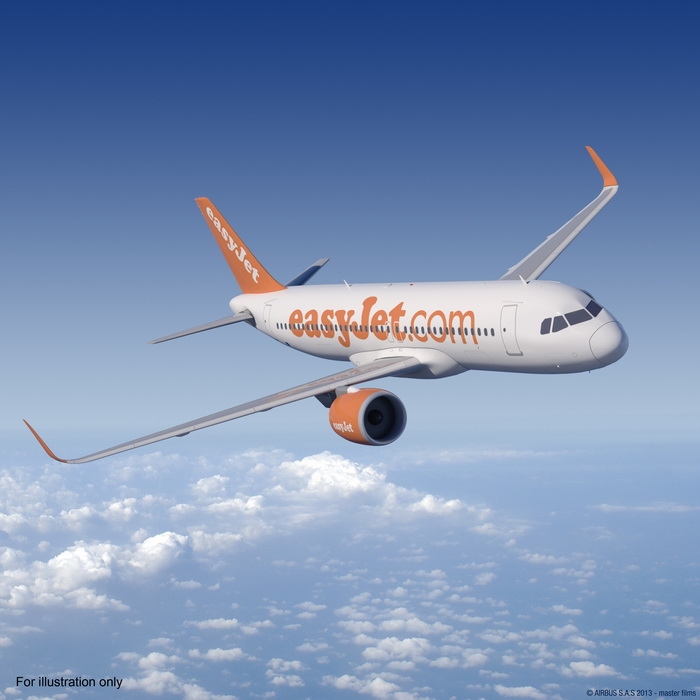


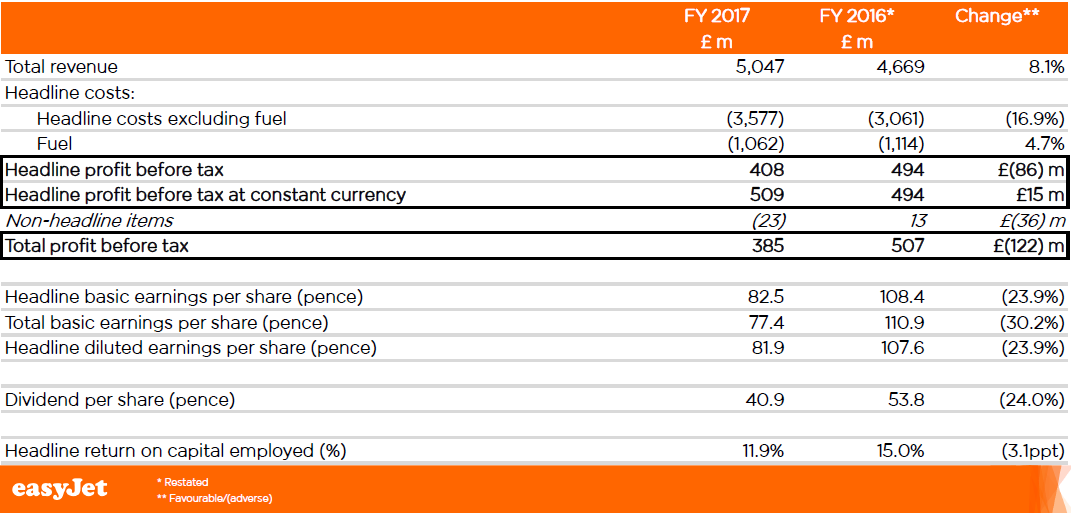
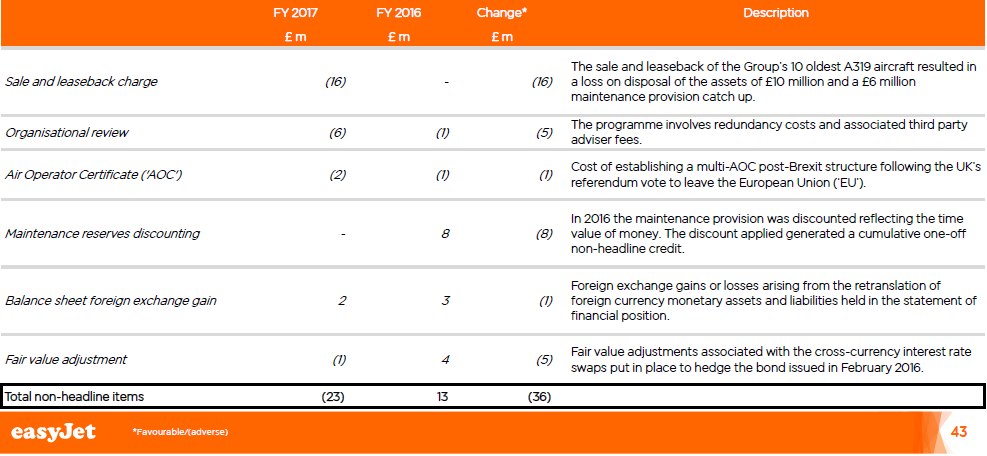
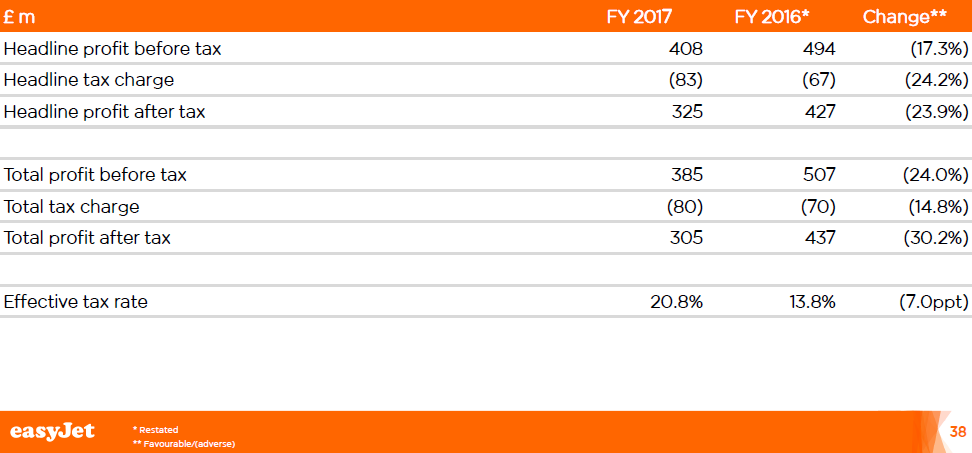
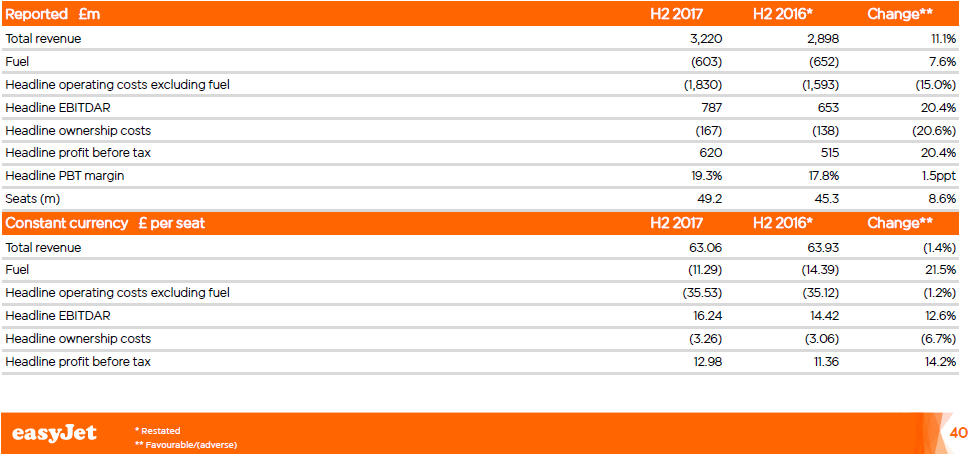
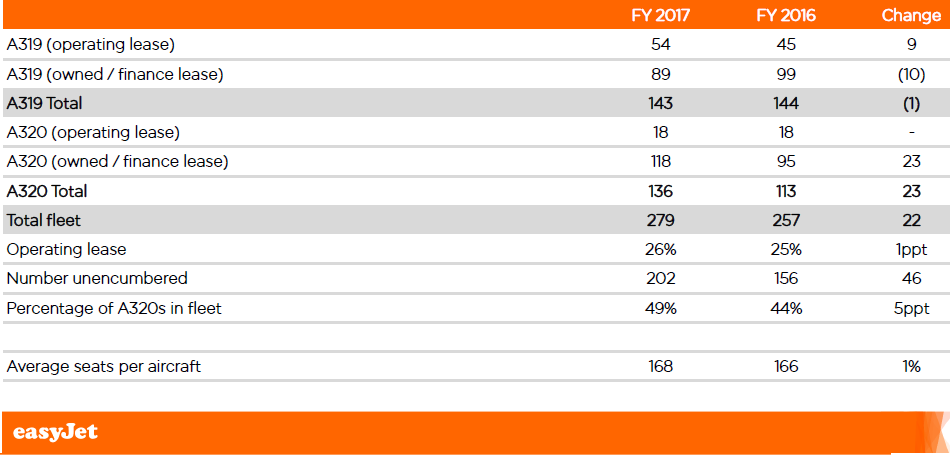
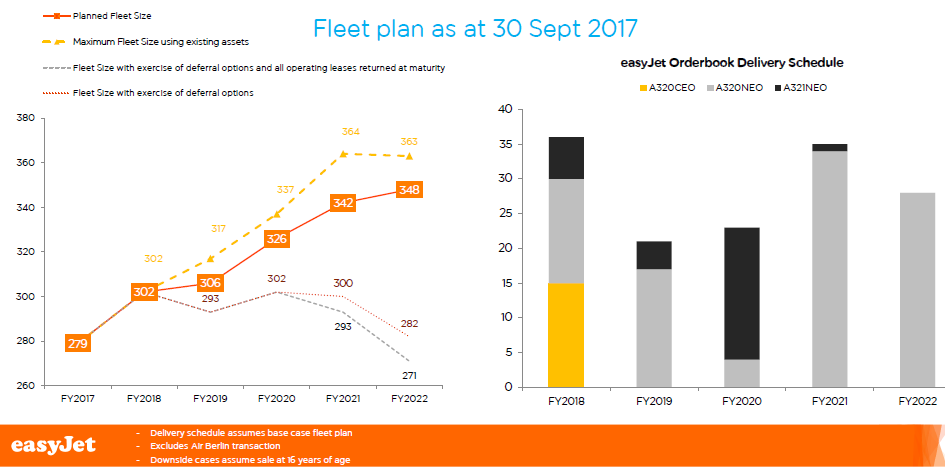
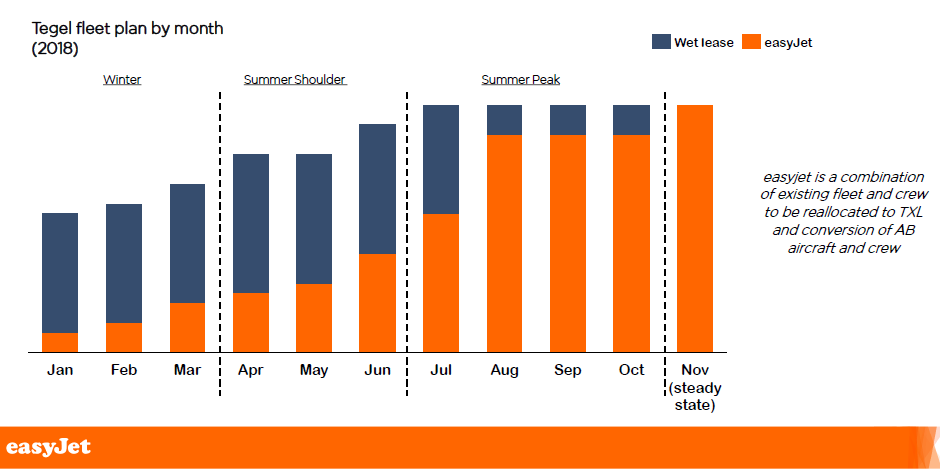
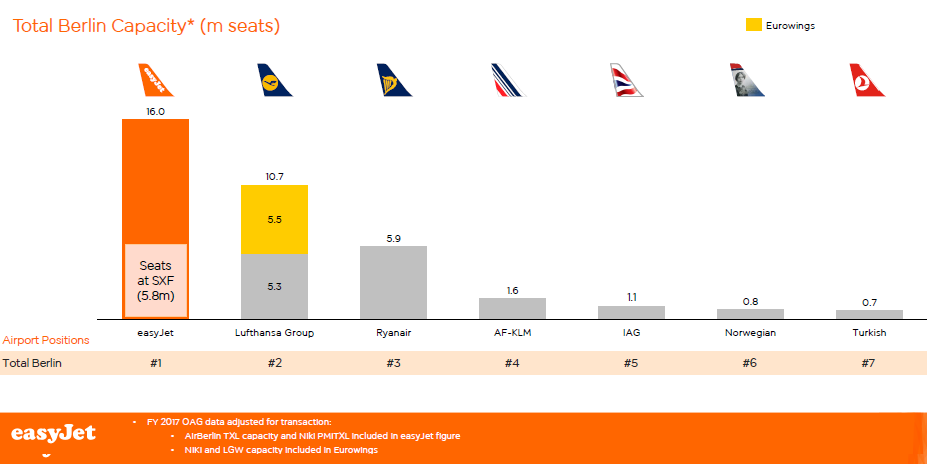
Ticket prices in Germany without AirBerlin are quite higher than they have used to be.
I suppose that is what was meant by “competitive pressure has improved during 3Q2017”.
Its unfortunately true, my preferred European airport to fly into is Munich but connectivity to Eastern Europe is basically restricted to Legacy airlines and EW, and generally pricey.
Not sure if easyJet is allowed to fly inter-Germany but flights between Munich and Berlin would have been very handy. Flights from Munich to a couple of key destinations in Eastern Europe will be a bonus.
One good reason for good operational costs might be the use of avtechs inflight Data for weather and Wind calculations for accurate planning and fuel burn savings.
Is Europe too crowded in the sky and the routes between cities fairly rigid between waypoints for ‘weather and wind’ to have much difference. Long range over oceans would be different ?
I would very much think so.
Bjorn, or anyone who cares to comment, I thought it was “disfunctional” for an airline to run at over 90.0% of capacity? (E.g. Issues like timely boarding and timely departure, too little system “slack” for standbys and/or in case of mechanicals, etc.)
I fly easyJet quite often. Most times the aircraft are full, they have a good product and good schedule.
The airline declares himself satisfied with over 90% load factor. The turn around times are most of the time within the 30 minutes target. To get there gate clearing with staged boarding is cleverly used. It works (you board to the gateway and wait there until cleaning is done, then boarding through the front and rear doors).
At aircraft problems, you have problems whether at 80 or 90% load factor, therefore focus in on a reliable and well maintained fleet.
To Scott, Transworld and all my other fellow Americans…
HAPPY THANKSGIVING !!!
Average sector length 700 miles
Average profit, a fiver
Still operating 143 A319s
Seems perfect for Bombus cs500
What am I missing?
Fleet commonality? Move to larger aircraft? A bit of both?
Fleet commonality seems NB for making an LCC work. Norwegian will operate 737’s and 321LR’s, but the 30 A321’s a “niche” and part of the longer haul fleet.
Maybe an “easyJet-CS” airline could operate certain routes for EJ in some ways like other airlines operate flights for Delta Connection and American Eagle.
I thought that the CS300 could fit in well with easyJet, will seat around 155 at 30″ pitch, currently the 319’s seats 156 at 29″ pitch.
There are several shorter strips in the Alpine region where a CS100 could be handy.
There’s a few things that make Easyjet appealing to my elderly parents.
1) they don’t cancel due to fog as much as BA; the Toulouse Gatwick flight is often fine, whilst the BA aircraft operating the same route at the same time stays on the ground (though that might be an old and out of date observation).
2) they’re nicer than Ryanair
3) even my mother notices that the A320 family is more comfy than a 737
Though like everyone else if it goes wrong it can go wrong in a big way!
At the beginning of the year, we had checked in, arrived at the airport and passed through security. Shortly after arriving at the gate, in a sleepy little corner of Basel airport, the info screen for our flight changes. First it changes to another gate, then another time and then it says it cancels. Nobody at the gate. Some people go to the adjacent gate and the person there tried but after making a phone call, all she could tell everybody was that the flight had indeed been cancelled but nothing else. A bit frustrating.
Long story short, they finally did bus us to a hotel in the area and put us on a special flight to our destination the next day but the lack of concrete information and coordination at the beginning did much to make an unpleasant situation worse. Not the onsite personnel’s fault, they weren’t a part of Easyjet, just some company that was contracted to run the ground ops at Basel. That it was a Sunday evening at around 9 pm probably didn’t help the matter.